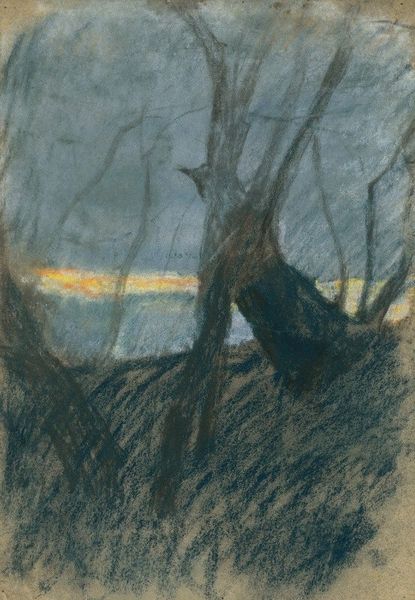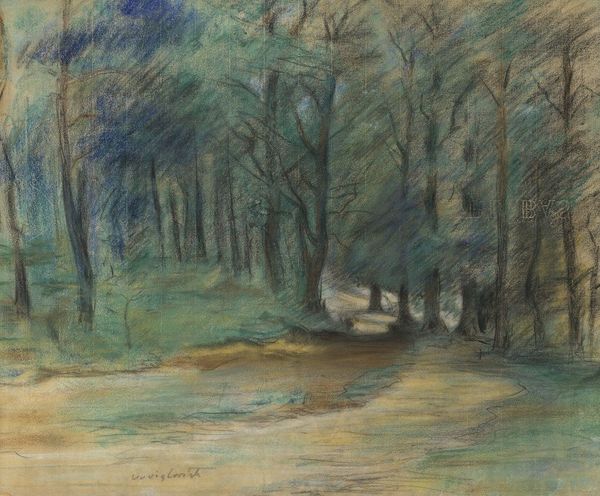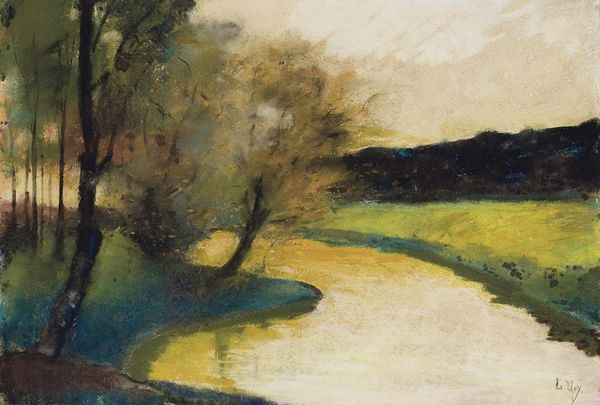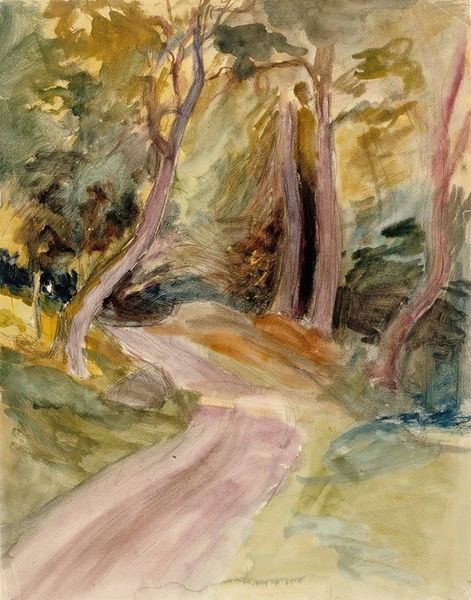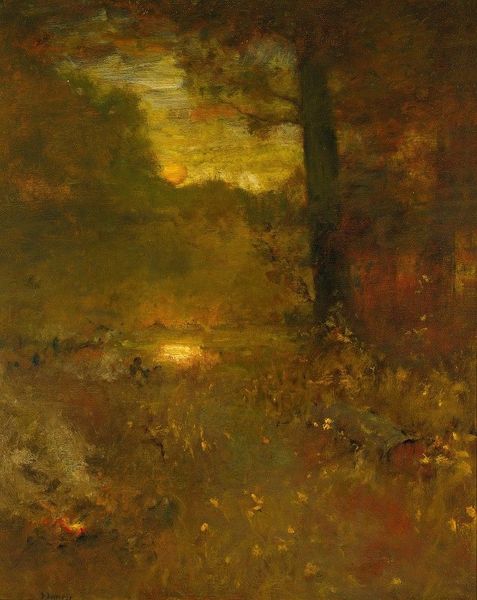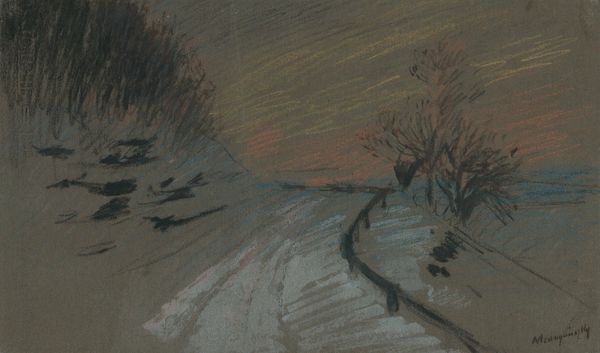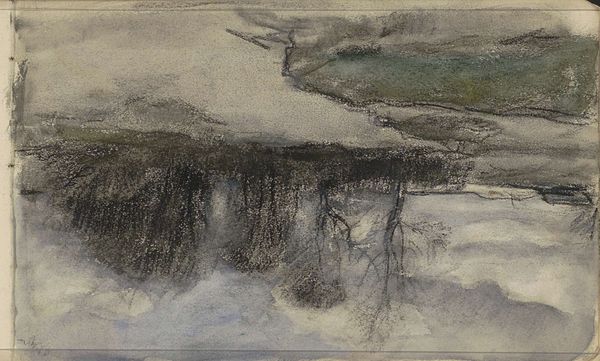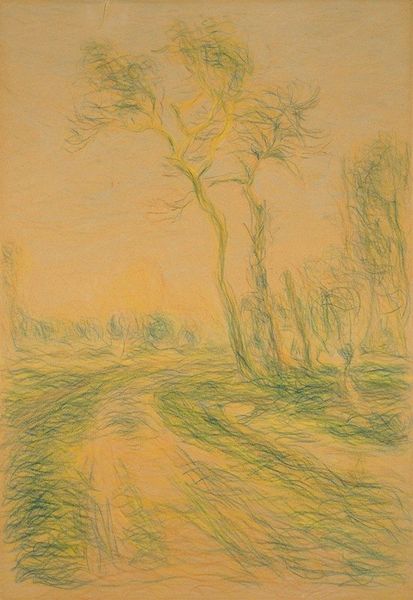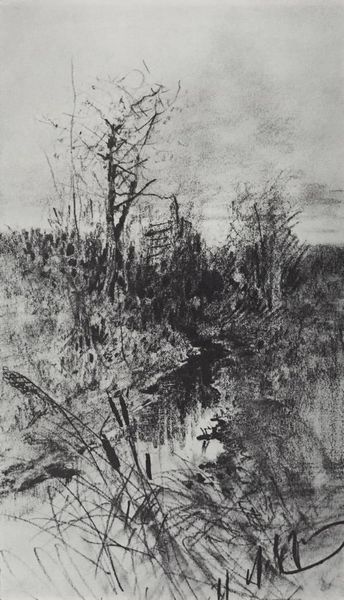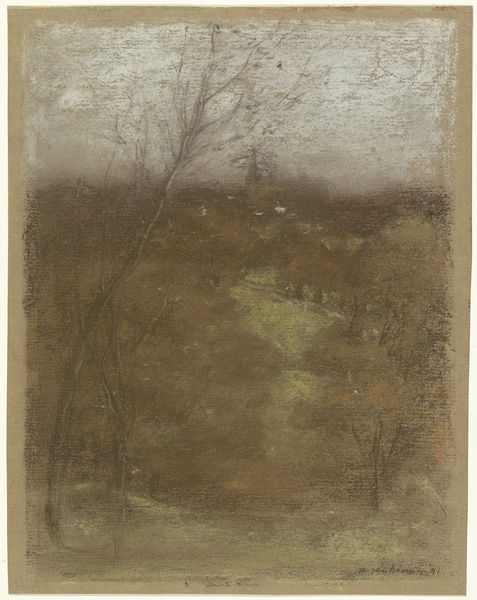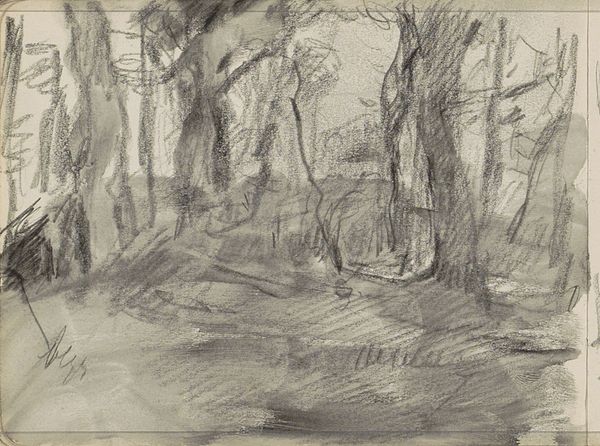
Copyright: Public Domain: Artvee
Editor: So this is "Landscape," a drawing made with charcoal, pastel, and pencil on paper, created by Ladislav Mednyánszky between 1875 and 1885. It strikes me as very melancholic; the colors are muted, and the composition feels somewhat unbalanced, as if the trees are crowding the path. How do you interpret this work? Curator: The landscape tradition during that period was heavily intertwined with national identity and Romantic notions of the sublime. Mednyánszky, though, seems to offer a critique of that idealized vision. The “crowding,” as you called it, can be seen as the socio-economic forces encroaching on rural life, particularly the Austro-Hungarian Empire's industrialization. Editor: That's interesting. I was focused on the personal mood, but the political context makes a lot of sense. The darkening trees almost seem to represent those forces you mentioned. Did art institutions at the time grapple with portraying those societal issues? Curator: Absolutely. Consider the rise of Realism and Naturalism in painting. Artists increasingly focused on the everyday realities of peasant life and labor. Mednyánszky's landscape fits within this broader move towards a more critical, less romanticized depiction of the world. Where would an image like this, lacking heroic or religious themes, be displayed? Was there space in society for work reflecting hard realities rather than myths? Editor: Museums perhaps rejected displaying work that exposed realities rather than glorifying them? This changes how I look at art's relationship with the viewer; art is influenced and shapes its socio-political surroundings! Thank you! Curator: Indeed! And examining those relationships helps us understand art's enduring power. Consider art not just a visual treat, but as active engagement within our surroundings. Editor: This has really widened my understanding; I feel enlightened!
Comments
No comments
Be the first to comment and join the conversation on the ultimate creative platform.
